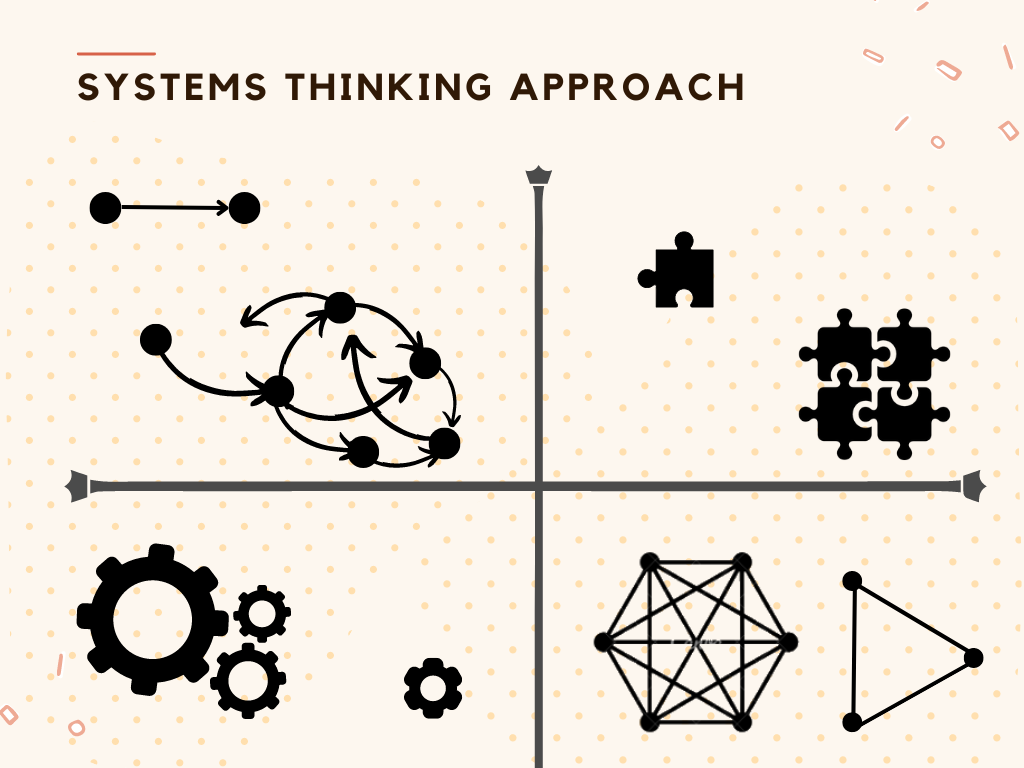
Home / Student Tasks / Systems Thinking Approach
SYSTEMS THINKING APPROACH
A systems approach provides an integrative causal framework for students to explore an interdisciplinary problem. The framework can help put aside disciplinary approaches at the start and allow students to work from a holistic understanding of problem/phenomena.

This task is most suitable for:
Interactions
Mixed (interdisciplinary) groups
Degree of Integration
Interdisciplinary
Problem structure
Open-ended problems
Skill targets
Meta-cognitive, interdisciplinary problem-solving
- Metacognitive Skills (3/7)
- Interdisciplinary Problem Solving Skills (3/7)
- Team Skills (3/9)
What is a System Thinking Approach?
In a systems thinking task – as described by Mathews et al. (2008) – students approach a problem by reflecting together on the causal structure and dependencies of the phenomena/problem. This means mapping out the relevant causal variables and their relations. This set of variables and relations may overlap with disciplinary boundaries, or may not, and the task can be treated as a cross-disciplinary one, encouraging students to think about representing a phenomenon from a fresh point of view rather than in strictly disciplinary terms. A systems view encourages students to think of systems as complex and driven by multiple interactions and feedback relationships which cross disciplines.
Ready-made Resources
The study about the Systems Thinking approach. Also provides a course design
for students
Small summary of the Systems Thinking approach, including the seven steps involved.
Potential Uses
-
For Developing a Richer Understanding on a Problem
A systems approach can be used to help students develop a rich collective understanding of a problem, by mapping out contextual dependencies and temporal dependencies, as well as the different roles and perspectives of stakeholders. Students are encourage to think through scenarios but try to anticipate the effects of these different dependencies, in order to build a complex solution or find an optimal solution with a more robust likelihood of handling the problem.
-
For Conceptual Integration
Students brainstorm a set of relevant variables which compose a system and /or influence or control it; and map the causal relationships between these variables. Students can draw upon their disciplines in order to suggest variables and relations, or they can pose novel relations. Insofar as the relations cross disciplinary boundaries this conceptual model can be treated as an interdisciplinary representation and used to make predictions on the system, or explain why certain patterns occur by tracing causal relations within the system. Through such an analysis students can develop a richer understanding of a problem, and how it might be addressed. Students use a conceptual integration to further develop a quantitative model. Students collect data on the variables and postulate mathematical relationships to describe the interactions. Students can draw on their distinct disciplinary backgrounds for collecting data on specific variable or posing relationships for those in their domains. Models can be simulated to explore a system or make predictions.
